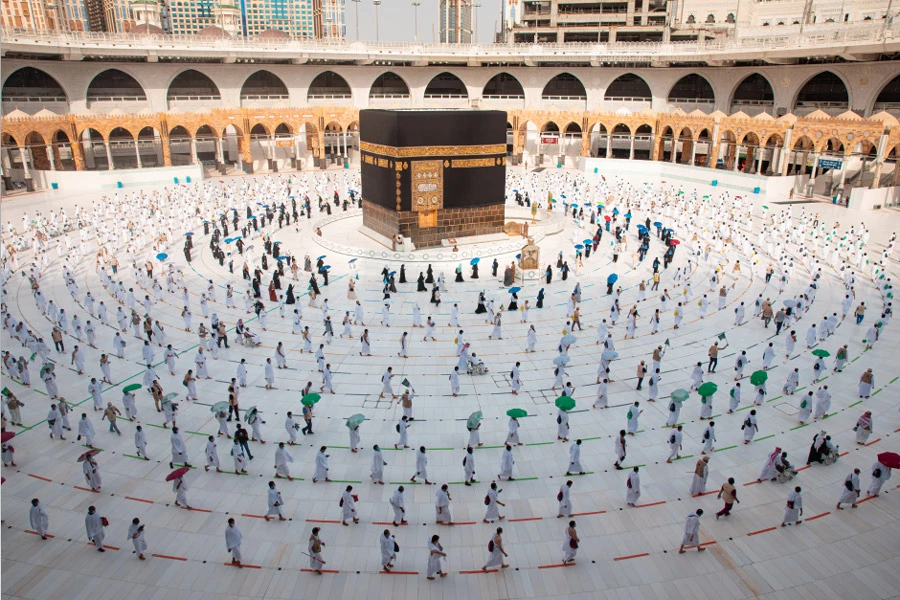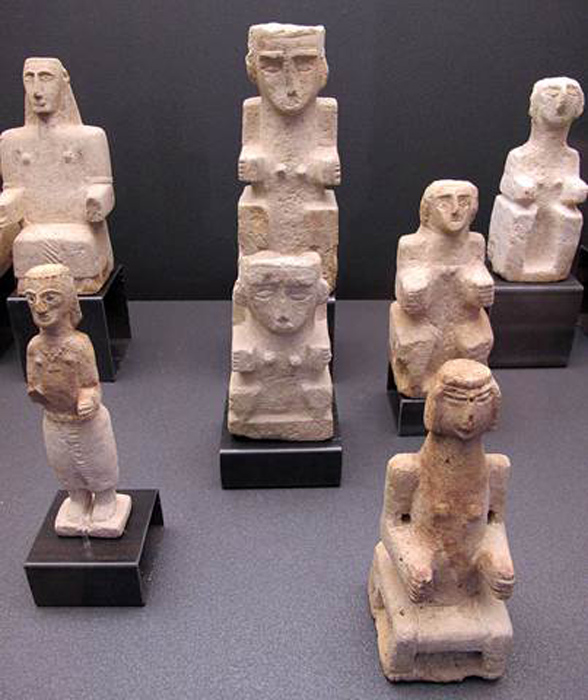One of the fundamental aspects of the Islamic faith is the Hajj. This annual pilgrimage to Mecca and the Kaaba, the “House of God”, is considered a central pillar of Islam and every Muslim is expected to complete the journey at least once in their lifetime.
Today, around two million Muslims make this pilgrimage every year. It takes place over five or six days during the last month of the Islamic lunar calendar.
As one of the five Islamic pillars it is a sacred event and Muslims have to follow certain rules and conditions to perform the pilgrimage. It is at the very heart of Islam, but where did it come from?
Some suggest that the origins of this pilgrimage may be drawn from earlier, pagan traditions. This is not unusual in other religions: the stories about Christ for example borrow from older Greek myths of Dionysus, or the contemporaneous figure Apollonius of Tyana.
But Islam has very little in common with the idol worshipping earlier pagan traditions of the middle east. In the Hajj therefore, are we seeing an unusual link between the Muslim duty to make a pilgrimage to Mecca, and the melting pot of religions which came before?
Pre-Islamic Polytheism
Pre-Islamic Arabia was a largely polytheistic society. Many gods were worshipped, from local deities to more fundamental creator and weather gods, at multiple sites across the subcontinent. One of these sites was located at the Kaaba, which would later become the destination for the Hajj and the most sacred site in Islam.
This association of gods with specific locations and the need to trave to be in the presence of the god in order for a believer’s prayers to be heard, necessitated the need to travel to these sites. Practical considerations meant that prayers would ordinarily be made to local gods, who could easily be reached.
Other beliefs in the area allowed for worship whilst travelling through the landscape. The nomadic Bedouin, ever a practical culture, worshipped on the move.
- Apollonius of Tyana Similarities to Jesus Christ
- Asherah: did the God of the Hebrew Bible have a Wife?
However, some sites which were popular destinations for pagan polytheistic worship started to attract association with more and more gods. This was another eminently practical solution, as many gods could be prayed to in a single location.

The Pre-Islamic Kaaba was a key location for such worship, famous across Arabia and said to contain 100 gods, represented by pagan idols. This would have helped Mecca prosper, as many would be drawn to the city to worship their god, or to be heard by the pantheon generally.
Pagan Ritual Pilgrimage
So there were certainly individual pilgrimages to sites including the Kaaba made by pagan Arabs in the centuries before Islam. But these individual journeys were very different from the Hajj, with its processional ceremony.
However, there is evidence of ritual in the pagan pilgrimage too. Some pagan Arabs believed in complete silence during the pilgrimage. Others, such as the Quraysh, performed a ritual known as “tawaf” where they would strip naked.
Although Muslims believe that the Islamic Hajj can be traced back to the times of Abraham, the Islamic Prophet Muhammad established the current rituals of the Hajj. He travelled to Mecca with his followers and destroyed the pagan idols that surrounded the Kaaba.
This seems to be a clear break with previous traditions, a removal of the old pagan ways and the introduction of Islam in their place. But are there elements of the previous pagan rituals which were retained, despite this?
As an example, there is recorded evidence of pagan idol worship where the statue of the deity is placed in a central location, and then devotees walk around the statue to venerate it. The parallels between this and the Hajj ritual where you must walk anti-clockwise seven times around the Kaaba are clearly apparent.

Other earlier traditions were retained as well. The wearing of the hijab by free women and praying five times a day were also traditionally practiced by earlier pagans. And the symbols of the pagan goddess Al-Lat, the crescent moon and the morning star, are found on many flags of Islamic countries today.
Differences between Paganism and Islam
Does this mean that Islam is just an iteration on the pagan religions practiced in the region for centuries before, rather than revolutionary? This is clearly wrong and a gross misunderstanding of the fundamental changes Islam brought to the region.
- Land of the Rising Sun: Did Jesus Retire To Rural Japan?
- The Tophet: Was Ancient Carthage Driven to Child Sacrifice?
The core beliefs of Islam are very different to the worship of pagan idols in pre-Islamic Arabia, and the destruction of these idols is a key moment in the life of the Prophet. There are clear parallels with similar instructions from the monotheistic god in the Hebrew Bible, through the destruction of the statue of a golden calf, and in the ten commandments.
In practical terms, the replacement of a multitude of faiths with a single religion dominating the region was a powerful unifying force. Other aspects of Islam, like allocating responsibility for worldly matters primarily to men, have no basis in earlier pagan beliefs where the sexes were often more equal.
A Coincidence In Worship?
It may be that a solution to this question can be found in these practical considerations. The need for a pilgrimage, and the importance of suitable ritual customs being observed during this pilgrimage, were felt equally by Muslims and pagans.
But that does not necessarily make Islam derivative of earlier pagan beliefs, or that aspects of the polytheistic religions were borrowed by the Prophet Muhammed. The processional aspects of both, for example, would naturally occur in any situation where large numbers of devotees converge on a single location: this is not the same as saying Islam copied pagan rituals.
There is also the risk of the western world misunderstanding the fundamental shift in religion in Arabia which came from the rise of Islam. The western world has often mistrusted Islam and paganism alike, and the collective classification of all such religions by Christians as “other” invites assumptions that they are all the same.

It would be incorrect to look at the sites of pagan worship being the same as the Islamic holy sites and assume that they are a continuation of the same traditions. While the Hajj does have similarities with earlier pagan pilgrimages, it is essentially Islamic, one of the five key pillars of Islam, and should stand apart.
One might as well quibble that the Hebrew God has pagan origins, or that the stories of Christ were not real. In the end, each individual must find their own answers to these questions. To a disinterested and atheist observer, Islam does seem to contain many holdovers from earlier traditions in the region.
But then, so does any religion.
Top Image: Pilgrimages to religious sites occurred for centuries before Islam. Source: Photobank / Adobe Stock.
by Bipin Dimri